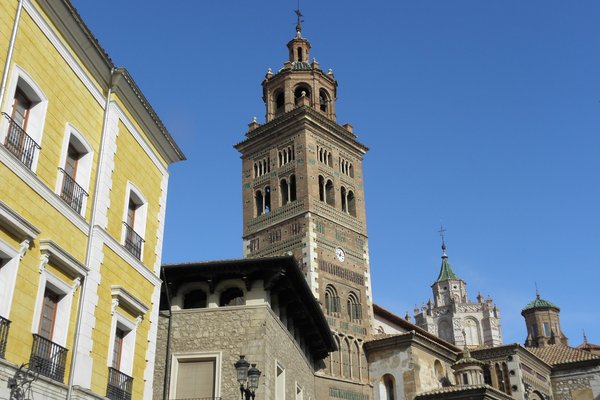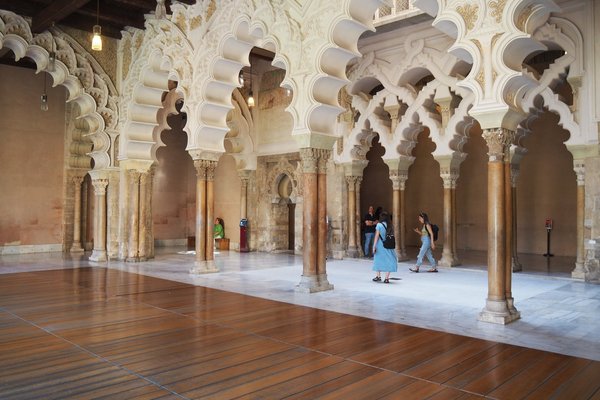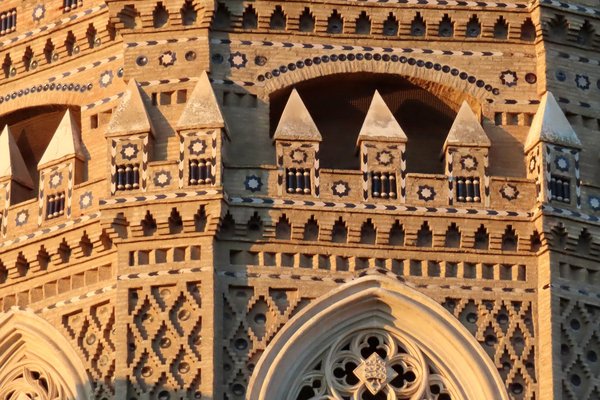Spain
Mudejar Architecture of Aragon
The Mudéjar Architecture of Aragon represents the most outstanding examples of Mudéjar construction techniques and art forms.
Mudéjar is the style of Iberian Christian architecture and decoration strongly influenced by Moorish taste and workmanship. The ten included buildings cover the whole period, from the 12th to the 16th century. The architecture is characterized by bell towers shaped like the Islamic minaret, the use of bricks, glazed tiles and wooden ceilings.
Community Perspective: Teruel is an easy place to start as it holds 4 of the 10 inscribed components, as is Zaragoza which has 3 of which the Aljafería palace is the best.
Site Info
Official Information
- Full Name
- Mudejar Architecture of Aragon (ID: 378)
- Country
- Spain
- Status
-
Inscribed 1986
Site history
History of Mudejar Architecture of Aragon
- 2001: Extended
- To include sites in Calatayud, Cervera la de Cañada, Tobed and Zaragoza
- 2001: Name change
- From "Mudejar Architecture of Teruel" to "Mudejar Architecture of Aragon"
- 1986: Inscribed
- Inscribed
- Type
- Cultural
- Criteria
- iv
Links
- UNESCO
- whc.unesco.org
- Official
-
- turismo.teruel.es — Teruel
- tobed.es — Tobed
- calatayud.es — Calatayud
- Related
-
- comarcacalatayud.com — Mudejar architecture in the region of Calatayud
- aragonmudejar.com — Arte mudejar
All Links
UNESCO.org
- whc.unesco.org — whc.unesco.org/
Official Website
- turismo.teruel.es — Teruel
- tobed.es — Tobed
- calatayud.es — Calatayud
- zaragoza.es — Zaragoza
Related Resources
- comarcacalatayud.com — Mudejar architecture in the region of Calatayud
- aragonmudejar.com — Arte mudejar
Community Information
- Community Category
- Urban landscape: Medieval European
Travel Information
Valencia Hotspot
Recent Connections
-
Perfect Inscriptions
1986 -
Depicted in Mizielinska Maps
Palacio de la Aljafer?a in ZaragozaSee …
-
Poetic Quotations
Al-Yazzar as-Saraqusti is considered th…
Connections of Mudejar Architecture of Aragon
- Trivia
-
-
On Euro coins
Commemorative 2 euro coin Spain 2020 -
Depicted in Mizielinska Maps
Palacio de la Aljafer?a in ZaragozaSee i.pinimg.com
-
Opera
Verdi's Don Carlos takes place at the Aljaferia palace in Zaragoza. -
Only portion of building inscribed
Only the tower of San Martin church in Teruel is inscribed -
Famous Love Stories
Teruel: Diego de Marcilla and Isabel Segura
-
- History
-
-
Ancient Roman colonies
La Seo Cathedral in Zaragoza is located above the ancient Roman forum of Caesaraugusta. -
Located in a Former Capital
Parts of Aragon's Mudejar are in Zaragoza, former capital of Kingdom of Aragon
-
- Architecture
-
-
Brick architecture
The use of brick is one of the characteristics of Mudéjar, for example in its towers -
Mudejar style
"It expresses the evolution of Mudéjar construction techniques in both structural and formal terms" (crit iv) -
Glazed tiles
"it is characterized by an extremely refined and inventive use of brick and glazed tiles in architecture" (AB ev) -
Octagons
Cupola of the Cathedral in Teruel
-
- World Heritage Process
-
-
Perfect Inscriptions
1986 -
Inscribed on a single criterion only
iv. to be an outstanding example of a type of building, architectural or technological ensemble or landscape which illustrates (a) significant stage(s) in human history -
Extended
2001: To include sites in Calatayud, Cervera la de Ca?ada, Tobed and Zaragoza
-
- Religion and Belief
-
-
Cathedrals
Sta Maria de Mediavilla, La Seo -
Notable mosques
La Seo Cathedral in Zaragoza was converted from a mosque into a cathedralSee en.wikipedia.org
-
Fortified religious buildings
fortified church of santa maría in tobed
-
- Human Activity
-
-
Famous tapestries
La Seo Cathedral in Zaragoza has a large and valuable collection of Flemish and French tapestries which used to be displayed inside the cathedral
-
- Constructions
-
-
Sites of Parliament
Aragon parliament at the Aljaferia in Zaragoza. -
Freestanding Bell Tower
La Seo Cathedral
-
- Timeline
-
-
Built in the 13th century
Teruel was founded in 1176 and was the site of the first flowering of Aragonese Mudejar Architecture with the completion of the Romanesque Cathedral of Sta Maria in 1257. The other buildings added to the inscribed site demonstrate the development of the style through to the 16th Century
-
- WHS Hotspots
-
-
Valencia Hotspot
Teruel
-
- Literature & Film
-
-
Poetic Quotations
Al-Yazzar as-Saraqusti is considered the best exponent of muslim poetry in the taifa of Zaragoza. He's sometimes called the "alfajeria's poet" because of this poem: "It is enough for you as an honor and a source of pride that you were considered capable of building the Aljafería, alcázar in which joy fixed its camp and that dazzles the eye with its dazzling brilliance. Our feet tread on its ground raw silk instead of baked bricks and dust. We see (there) the rugs in an aligned form, embroidered in the center and on the sides. White on red, they resemble the boast of the lost and the blush of the maiden. Floor whose beauty of fine brocade spreads resplendent, like a pleasant orchard."
-
News
No news.
Recent Visitors
Visitors of Mudejar Architecture of Aragon
- 2Flow2
- Alberto Rodriguez Gutierrez
- aleserre
- Alexander Barabanov
- Alexander Lehmann
- Alikander99
- Allan Berry
- A. Mehmet Haksever
- Ana
- Ana Lozano
- Ansitong
- Antonio J.
- Argo
- Aspasia
- Assif
- Atila Ege
- BaziFettehenne
- Bill Maurmann
- Bin
- Boj
- Bram de Bruin
- Can SARICA
- Caspar
- Catoplayer
- Cezar Grozavu
- Christian Wagner
- Christravelblog
- Claire Bradshaw
- Clyde
- Csaba Nováczky
- CugelVance
- Daniela Hohmann
- Daniel Chazad
- dankir
- Dan Pettigrew
- David Aaronson
- David Berlanda
- Dimitar Krastev
- Dimitrios Polychronopoulos
- disnsam
- Dolemite92
- DonQuijote
- Dwight Zehuan Xiao
- Echwel
- Elaine McArdle
- Elia Vettorato
- Els Slots
- Erik Jelinek
- Errol Neo
- fabi-ddorf
- Fan Yibo
- Feldhase
- Femke Roos
- Filip Murlak
- Filippo Ubaldi
- GeorgeIng61
- Gernot
- Grzegorz Andruszkiewicz
- HaraldOest
- Harald T.
- Harry Mitsidis
- Hasco
- Hubert
- Iain Jackson
- Ian Cade
- Ivan Rucek
- Jakob F.
- janameerman
- Janina Lehmann
- Jarek Pokrzywnicki
- Jasam
- Javier
- Jawnbeary
- Jeanne OGrady
- Jens
- Jezza
- Joel on the Road
- Jonas Kremer
- Jon Eshuijs
- Jon Opol
- KarenBMoore
- Karito Vies
- Kim, Soo-youn
- kjluebke
- Klaus Freisinger
- Krijn
- krtek
- kutasp
- Kyle Magnuson
- Lara Adler
- Lisu Marian
- Loic Pedras
- Luboang
- Luis Filipe Gaspar
- Maciej Gil
- Maciej Gowin
- Malgorzata Kopczynska
- marc Rouserez
- Martinacurra88
- Martina Rúčková
- MAURO PODDA PANI
- MaYumin
- MH
- M. Huineman
- Mia esguerra
- Michael Novins
- Michael Turtle
- Mikan22
- Mikko
- MMM
- Msarmiento1979
- nan
- napalm
- Niall Sclater
- Nick M
- Nihal Ege
- Olli-Pekka Turunen
- PabloNorte
- Patrik
- Patrik_globe
- Paul Schofield
- Peter Lööv
- Petteri
- Philipp Leu
- Philipp Peterer
- Piotr Wasil
- Porcho
- Purrfect
- Randi Thomsen
- Reza
- RobRos
- Roger Ourset
- Roman Bruehwiler
- Sabrina Liebehentschel
- scubarrie
- Sergio Arjona
- Shandos Cleaver
- Solivagant
- Sorel Americo
- Stan
- Stanislaw Warwas
- Svein Elias
- Szucs Tamas
- Tamara Ratz
- Taotao Chen
- Tarquinio_Superbo
- Tevity
- Thomas Buechler
- Thomas van der Walt
- Tim Allen
- Tonisan
- triath
- Tsunami
- Vanessa Buechler
- Viaje al Patrimonio
- voyager
- Walter
- Wojciech Fedoruk
- Xander Huang
- Xiong Wei
- Xiquinho Silva
- Zoë Sheng
Community Reviews
Show full reviews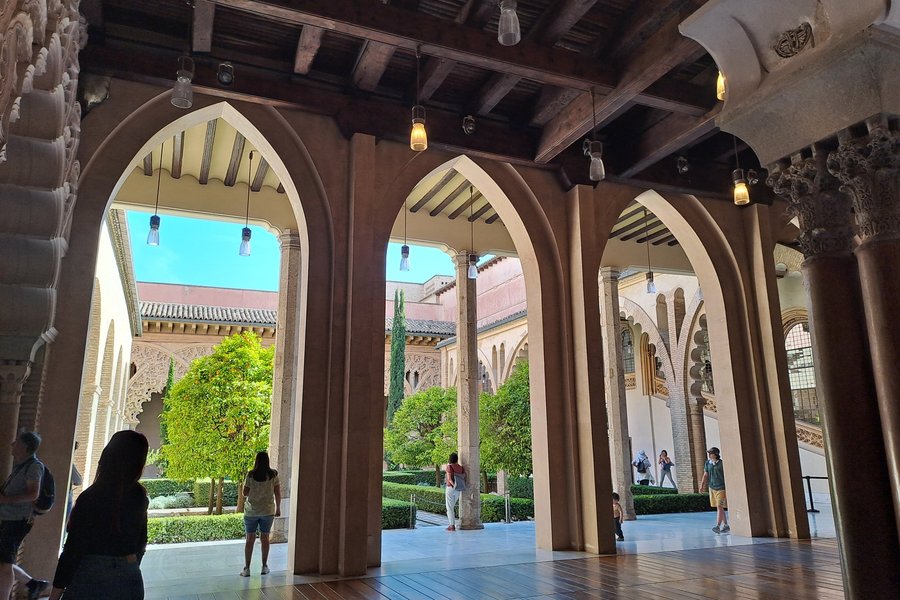
Perhaps I don't quite share the same enthusiasm as my predecessors because we were less lucky? We had decided to stay at the municipal campsite in Zaragoza, which was nice in itself, and to reach the city by bike, which was less so due to the lack of infrastructure. Probably because cycling is less common among the Spanish: a policeman made us dismount in the old town.
Since the Seo was closed, we took the opportunity to have lunch in the Plaza de Nuestra Senora del Pilar where the atmosphere was festive: the people of Zaragoza were celebrating their children's first communion. Then we cycled around the Seo before visiting the Aljaferia. The problem with the Seo is that there is not enough space to admire it in its entirety; it is crammed into a dense building, even though only certain parts of the cathedral are listed: the apse, the wall of the "Parroquieta" and the Cimborio according to the official UNESCO website. Note that the church of Santa Maria Magdalena and its bell tower, a stone's throw from the Seo, are interesting and not listed, but there too there is not enough space to fully admire it.
I am a fan of Islamic art, but I must admit that I felt less enthusiasm at the Aljaferia than in Andalusia, such as Seville, for example, or in Cordoba or Granada.
Jean-Paul Roux gives the following definition in the dictionary of Islamic arts, ed. Fayard, 2007, Mudejar art "designates …
Keep reading 0 comments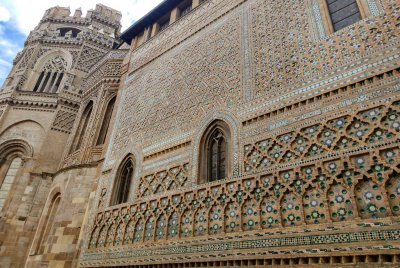
This WHS is a little bit weird to "review" as are many of the dispersed-location sites that highlight "examples of" a certain style of something. (Whether that be something natural or man-made.) Like many of the reviewers here, I experienced this WHS (in March 2025) at its sites in the city of Zaragoza. I did not go to Teruel at all.
The trip to Zaragoza was a delightful one, which can easily be done in a day or less to see the Aljafería, the excellent four Roman ruins museums, and the famed column inside "El Pilar" Cathedral. To focus more specifically on the WHS itself, I'd say the Mudejar Architecture is a great introduction to learning about the history of Muslim rule in Spain for those who are unitiated. (A period from the 700s ~ 1400s in which Muslims controlled the majority of the peninsula and then fought to maintain control in the face of Catholic kings who pushed to take the territory back.) While the WHS inscribed locations of the Mudejar Architecture are in the North, you could in theory plan a nice themed trip of Spain tracking the Muslim rule beginning in the South at World Heritage sites like Córdoba, Medina Azahara, and Sevilla, and then work your way up North to sites containing this Mudejar architecture. Such a trip would allow you to watch the historical progression and see how the Christian kings incorporated the Muslim motifs and structures from the land they …
Keep reading 0 comments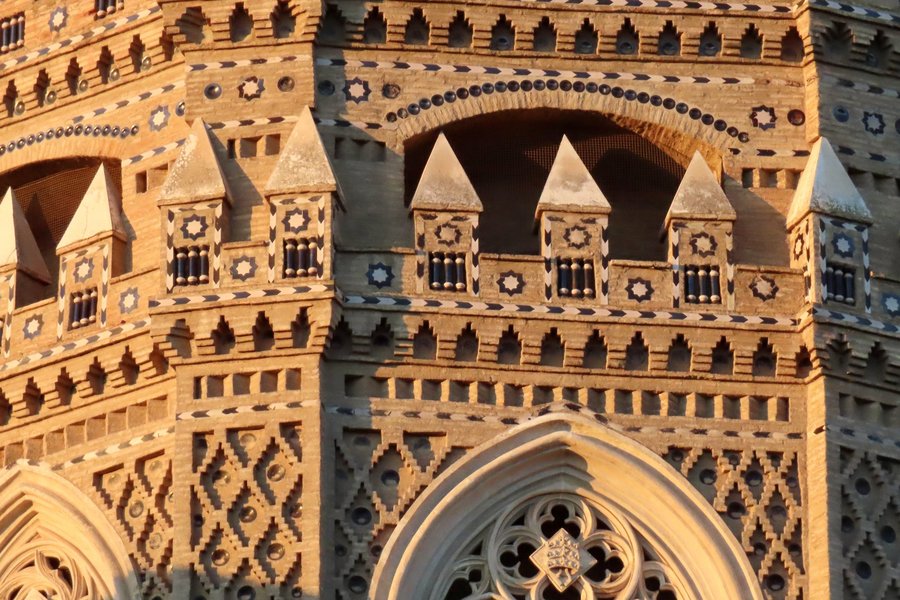
My interest in Al-Andalus and what came after was first perked with the novel 'The Lions of Al-Rassan' by Canadian author Guy Gavriel Kay. A major theme of the novel is the interplay between bigotry and tolerance. Zaragoza, a city under Muslim rule from the 8th century (around 718) to the 12th century (1118), is a city I longed to visit. However, it was not originally part of our itinerary for Barcelona and Bilbao, until I started researching trains. From Barcelona you can reach Zaragoza by high speed rail in 1 hour and 23 minutes. This inspired me to plan 1 night in Zaragoza and then continue on to Bilbao (slower train) the following day, happily my spouse agreed.
We arrived in Zaragoza just after noon, the train zipped along at 300 km to 340 km per hour. Having the rest of the day, we visited La Seo and San Pablo and much of the city with ease. In the latter church (San Pablo), upon my inquiry the sole staff person gave an impassioned lecture about Mudéjar architecture, World Heritage status, and the small details within the church I should pay close attention to. As other reviewers mentioned, various non-inscribed examples of Mudéjar architecture are evident in Zaragoza. The staff person at San Pablo ever so slightly admonished UNESCO and the Spanish Government for only recognizing 10 examples, when indeed there are over 100 examples in the region of Aragon. I appreciated the information and obvious enthusiasm for History.
Being …
Keep reading 0 comments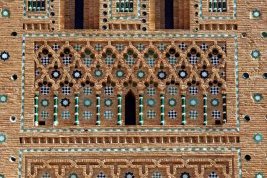
It is funny that the last review of this WHS is my own from 2014 about Zaragoza. And now, ten years later, after having completed this serial WHS, I can report on my visit to Teruel. And of course, the question arises which of the two cities is the more worthwhile destination? Both have their highlights and complement each other well. Zaragoza stands out with the Aljafería Palace and its painted wooden ceilings, typical elements of the Mudéjar style. In Teruel, it's all about the bell towers, or more precisely, their exterior decorations.
Four examples of these Mudéjar towers make up the Teruel part of this WHS. The exterior of these towers is almost entirely covered with geometric ornaments. These decorations made of red brick and glazed tiles immediately captivated me.The best place to start your tour of Teruel is the Torre de El Salvador. You can climb the tower, which in fact is two towers, one inside the other, with the staircase between the walls. The tower houses the Centro de Interpretación del Mudéjar, in three rooms you can learn about the Mudéjar style and the history of Teruel. And from the top, you have a nice view over the city and to the other three Mudéjar towers.You will also learn about the legend of the construction of El Salvador and its twin San Martin. Two Muslim architects, Abdala and Omar, are said to have competed for the heart and love of the beautiful maiden Zoraida. The …
Keep reading 0 comments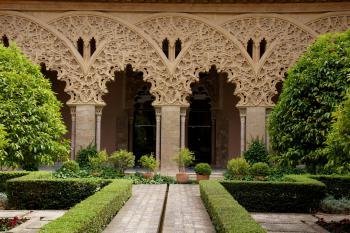
Mudéjares were the Moorish architects and craftsmen who stayed in Spain after the reconquest of the Iberian peninsula by the Christians. The Christian kings used the skills of the Mudéjares for their representative buildings. As a result the Mudéjar style emerged, a fusion of Moorish decorative elements and the Christian architectural styles of the Romanesque and Gothic.
We visited the three sites in Zaragoza in May 2014. The exterior of the Cathedral La Seo is a weird mix of styles, from the Plaza del Pilar you can spot the Romanesque apses with Mudéjar design, the Baroque bell tower, and the Neo-Classical façade of the main entrance. The best example for the Mudéjar style is the exterior wall of the Parroquieta chapel, beautifully decorated with a geometric pattern made of bricks and glazed tiles. The exuberantly decorated interior is also worth visiting although it has no Mudéjar elements. The second site, the Parish church of San Pablo, is just a few hundred metres from the city centre. It is entirely built of brick, most striking is the octagonal bell tower with Mudéjar decorations at the upper floors.
The highlight of our visit was the Aljaferia Palace. Used as a summer palace in the 11th century, it now houses the Regional Parliament of Aragon and administrative offices, but the oldest parts are used as a museum and are open to the public. The heart of the palace is the beautiful patio of Santa Isabel (photo), the columned hall and the adjacent Islamic …
Keep reading 0 comments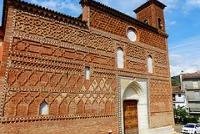
I visited this WHS in May 2014. I visited 4 out of the 5 localities included in this WHS and I visited 6 out of the 10 outstanding Mudejar buildings mentioned by UNESCO. In Zaragoza, I visited all 3 sites and I must say that the interior of the Aljafería Palace was my favourite. I haven't visited Granada and Alhambra yet so I'm glad I visited this site before which surely helped me appreciate its beauty even more. The La Seo Cathedral costs 3 euros to visit however there isn't much Mudejar architecture left to see inside. Nonetheless, if you're not pressed for time, do visit as there is an interesting tapestry collection displayed inside. The Mudejar architecture of La Seo is clearly visible on the lateral side just beside the Diocesan Museum. The Church of San Pablo too is best viewed from the outside from where you can gaze at the ornate brickwork on the bell tower. Zaragoza offers more Mudejar sites other than those mentioned by UNESCO which I visited during the 2 days I spent here. Obviously you cannot miss the huge Basilica of Our Lady of Pilar and on one of the tall church towers opposite the Ebro river bank you can go up a lift to enjoy an amazing view of all the spires in Zaragoza as well as the several bridges on the Ebro river. A few photo tips: best light for the panoramic view from the Basilica is late afternoon; same applies for …
Keep reading 0 comments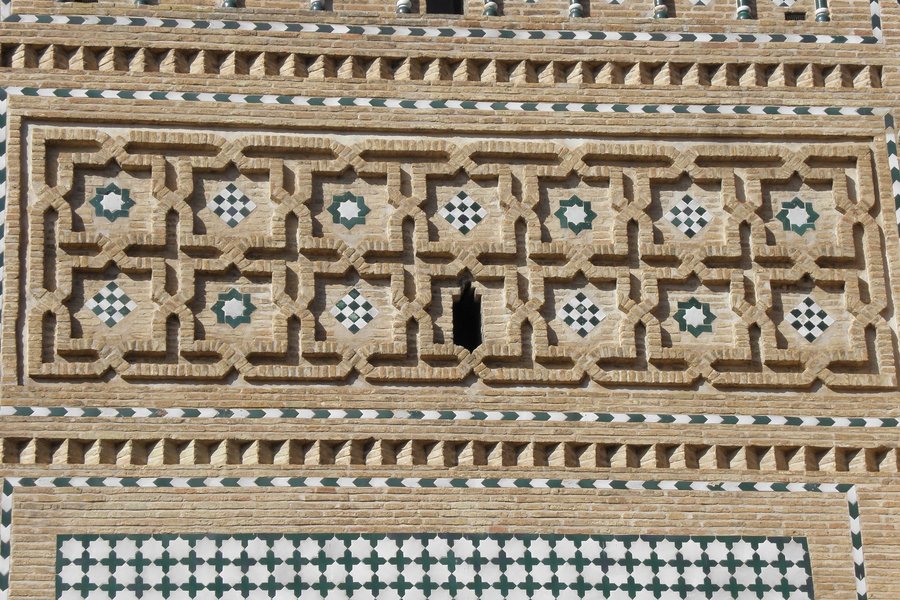
This is a quite interesting and rather unique site spread over several places in the northeastern region of Aragon. It includes churches and secular buildings combining Christian (Gothic) and Muslim architectural features and decorations. The site is centered on the pretty town of Teruel, where it includes the Tower of El Salvador (which houses a nice museum), the Tower of San Mart�n (not accessible), the cathedral (impressive from the outside, but not really great inside), and the Church and Tower of San Pedro (very nice, but can only be visited with a Spanish-only guided tour; it includes a museum about a local legend featuring 2 star-crossed lovers). Those arriving by train will notice a huge fake-Mudejar staircase leading into town. The major city of Zaragoza also includes a few Mudejar buildings, the most interesting of which I found to be the large, fortress-like Aljafer�a Palace, which is a smaller version of the Alhambra and has a really beautiful courtyard. The La Seo Cathedral is also very impressive, both inside and outside. San Pablo Church and Tower is easy to find between the Aljaferia and the Cathedral, but was closed when I was there (the tower and the facade are the most interesting part anyway). Even though Zaragoza is not on most people's itineraries, it has a fair number of interesting sites (the most famous is the huge Pilar Basilica) and is on the high-speed train line between Barcelona and Madrid. From there, I took a quick train ride to the …
Keep reading 0 comments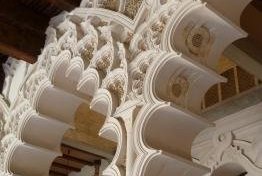
The three parts of this site located in central Zaragoza provided me with a great weekend break in yet another lively Spanish city.
I was particularly impressed with the Aljafería palace, after not expecting much it turned out to be pretty impressive. From the outside it looks like a rather austere fort, however as other reviewers have stated the interior courtyard is rather magnificent, looking like a smaller version of the Alhambra. The bright sunshine trickling water and cooling shade certainly made it a wonderful place to spend a slow Sunday morning. The walk back to the centre led me past San Pablo church, which has a rather large tower and pretty dazzling altarpiece.
Central Zaragoza turned out to be a rather impressive place, the main square is bounded by the massive Basilica of Our Lady of the Pillar which is well worth a visit to see its over the top baroque interior, and the views from the tower and bridges behind are distinct highlights of the city. When I visited the square was the site of protests about the economic problems facing Spain at the time. It gave the city a rather distinct atmosphere as well as giving me a few more people to talk to.
At the southern end of the square is the third part of the inscription, le Seo cathedral. As Assif states below, the Mudejar aspects are mostly viewable from the exterior, however the interior is well worth an exploration, again the altarpiece is rather …
Keep reading 0 comments
I attended a conference in Zaragoza and naturally used the opportunity to visit its share of the Mudejar WHS nomination. Three of the inscribed monuments are in Zaragoza and the rest are scattered in other parts of Aragon.
The Aljaferia palace is the seat of the Aragonese parliament and only part of it is open to visitors. What I found most striking was the combination of Moorish architecture with some clear symbols of Islam (such as the mihrab or the Arab calligraphy) and Christian medieval motives in the wooden carved ceilings. It isn't so much a true Mudejar building as this style only evolved after the reconquista and reflected an attempt to combine the Moorish style with Gothic one. The Aljaferia, on the other hand, is one of the only Moorish monuments which survived intact outside of Andalucia and is therefore earlier. Nonetheless, it didn't remain unchanged and the Aragonese princes lived in it and adopted it to their needs. For me it was unbelievable to imagine a Christian prince living in such a Muslim looking palace.
The Cathedral of La Seo is a very impressive cathedral. Its inner centralized nave is beautiful. However, I couldn't see much of its Mudejar characteristics in its interior. Those are evident, however, in the chruch's exterior, mainly from the northern side where you can admire the typical ornaments at the bell tower and its surroundings. The cathedral also features a collection of goblins of world importance that used to hang in the church …
Keep reading 0 comments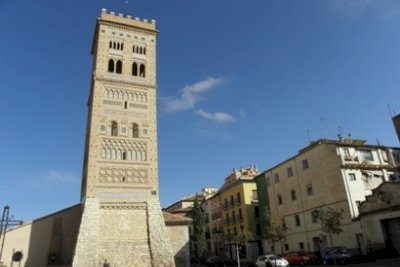
In preparation of this trip, I had been researching the 'Mudéjar' concept for a bit, as I knew nothing about it. The difference with the famous Moorish architecture in Spain (the Alhambra for example) is that Mudéjar is a fusion style between Islamic and Christian traditions. It evolved in areas where the Christians reconquered land from the Moors from the 12th century on. Islamic craftsmen and builders kept on working, and the new churches that were built copied the structure and decoration of minarets. Then they added gothic or baroque ornaments and included Christian imagery.
I only visited the town of Teruel out of this serial nomination covering 5 separate cities. Teruel is the site of the original nomination from 1986, and also the one with the earliest surviving examples of Mudéjar architecture. I drove there from Valencia Airport, and on the way, I encountered already many towns with the characteristic minaret-like bell towers. They are slim and tall, made out of brick and decorated with glazed tiles. This motorway is aptly named 'Autovia de Mudejar'.
Teruel has two free-standing Mudéjar towers and two more adjacent to churches. On the approach to the city center, the panorama is excellent, with oriental, exotic touches. Up close the towers appear well-cared for, sometimes in stark contrast with the surrounding dilapidating modern structures.
I also entered both nominated churches in Teruel. The cathedral has a completely decorated wooden ceiling, which is praised as thé number one Mudéjar remain. However you …
Keep reading 0 comments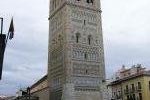
The most noticable feature that all the towers have in common that I have visited (in Calatayud, Zaragoza and Teruel) is the skill displayed by the bricklayers in creating the varied and ornate patterns. In Calatayud, I found Santa Maria's church only a short distance from the station, past the Plaza del Fuerte.
In Zaragoza, bus #51 took me from the station to the Aljafeira, a minature version of the Alhambra at Granada without the fountains. From here I walked to the cathedral via the church of San Pablo, and then returned to the station by bus #52.
Exiting the station at Teruel I was greeted by a long ornamental brick staircase (escalinata) which leads up to the town. But hidden behind the staircase are two lifts that take you up much more speedily. Once in the town the damage caused during the Civil War is immediately apparent. The four towers here differ in that they incorporate bricks of different colours.
Keep reading 0 comments
